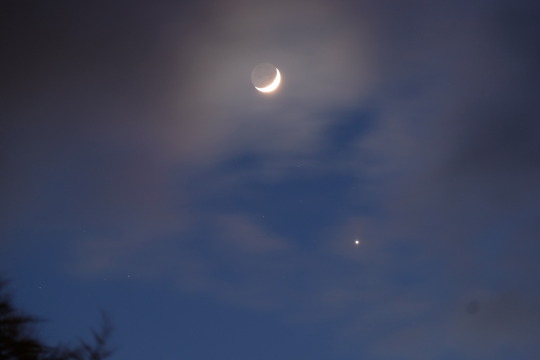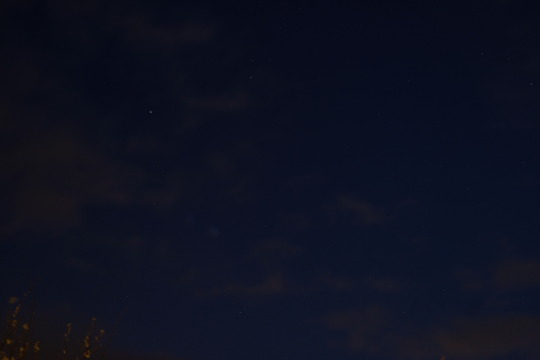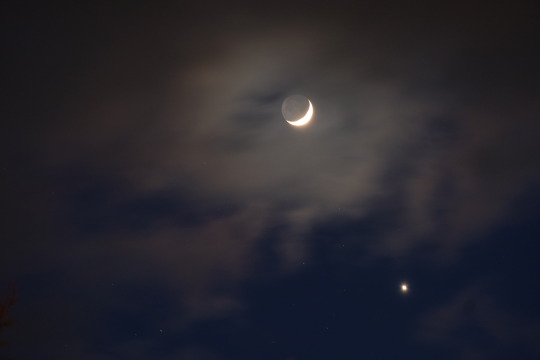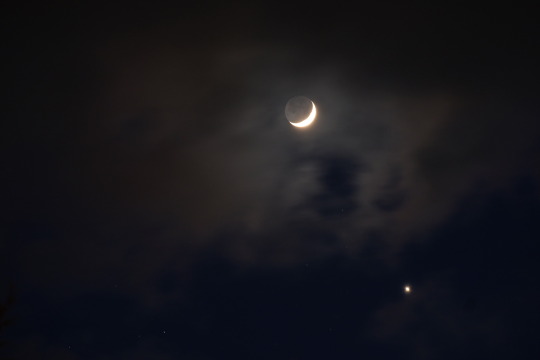#Astronomy Activities
Explore tagged Tumblr posts
Text
Lonely Planet's Top 10 Camping Destinations for This Easter
Discover the untold beauty of Australia’s most enchanting hidden gems, from the haunting allure of Yerranderie Ghost Town to the luxurious solitude of Faraway Domes in Glen Innes. Venture into the heart of nature with Arkaroola Wilderness Sanctuary’s star-studded skies, immerse yourself in the off-grid elegance of Aquila Glamping, or find serene isolation at Bruny Island Hideaway. Each…

View On WordPress
#4WD Trails#Air-Con Domes#Aquila Glamping#Arkaroola Wilderness#Astronomy Activities#Aurora Australis#Bank Room#Bay of Fires Retreat#Binalong Bay#Blue Tier Mountains#Bruny Island Hideaway#Bushwalking#Camping NSW#Chef’s Kitchen#Christmas Island#Cliff-Top Glamping#Clifftop Hepburn#Colonial Towns#Community Firepit#Conservation Effort#Dark Sky Sanctuary#Dirt Road Adventure#Egyptian Cotton#Endangered Wallabies#Endeavour Fern Gully#Ensuite Luxury#Faraway Domes#Farm-Fresh Eggs#Federation History#Flinders Ranges
0 notes
Note
OMG OMG HIHI HI IM AM UR FAN
CAN I REQUEST??
CAN YOU MAKE UMBRIEL DOODLES PLESSE I LOVE HER SO MUCH :3

Here's the girl herself !! Sorry it took me a while; I had to decide what colors I should give to her hat and muffles which took me like 45 mins until I couldn't take it anymore and just searched for a cap online 😬😬
And I just caught a cold due to the weather yay 👍👍 but I'll keep posting more 😼😼
#rahhhh her#i love her <3333#introvert ultra mode for the winter: activated /hj#solarballs umbriel#solarballs art#solarballs fanart#solarballs fandom#solarballs#astronomy#moon#my art#digital art#cozy art#if you rb she'll come to your house and will cutely get you ready for winter <333 /silly/nf
177 notes
·
View notes
Text
hi (makes starlo a red giant star early)

hey lol (steals all of his hydrogen EARLY so he’s FUCKED UP and RED instead of a MAIN SEQUENCE STAR and he can’t NUCLEAR FISSION!!!!)
here’s an extra doodle

he can talk in full sentences but a lot of the time it’s just too taxing along with everything else he has to worry about
#undertale yellow#uty#starlo uty#uty starlo#uty north star#north star uty#astronomy#red giant#red giant star#uty au#red giant starlo au#idk i may give it a better name later#but basically erm starlo had a near death experience and he went a stage early in the star life cycle cuz of it#and now he’s all messed up because yea#he’s not actively dying but like. he could. he certainly isn’t going to live as long as he would’ve#he’ll be a very pretty planetary nebula. (i’ll figure out a design for that one day)#art#my art#artwork#digital art#artists on tumblr#undertale#uty mooch#kinda#doodle#i know people make starlo forms a lot but like#cmon man!!!! i’m taking astronomy rn give me a pass
195 notes
·
View notes
Text
82,970 so far. Go a sign it already
#kosa#stop kosa#kosa bill#lgbt#lgbtq#lgbtqia#trans#transgender#internet freedom#internet censorship#asexual#queer#us politics#eclipse#astronomy#911 abc#fandom#boop#artists on tumblr#bad internet bills#palestine#gaza#free palestine#free gaza#petition#activism#sign this petition#dammit#shitpost
156 notes
·
View notes
Text
Sun Reaches Solar Maximum

watch the full NASA YouTube video: X
The Sun is stirring from its latest slumber.
As sunspots and flares bubble from the Sun’s surface, representatives from NASA, NOAA, and the Solar Cycle Prediction Panel announced that the Sun has reached its solar maximum period.
The solar cycle is a natural cycle the Sun goes through as it transitions between low and high magnetic activity and back again. Roughly every 11 years, at the height of the solar cycle, the Sun’s magnetic poles flip (on Earth, that’d be like the North and South poles swapping places every decade), and the Sun goes from calm to an active and stormy state.
During this most active part of the cycle (solar maximum), the Sun shows many more sunspots and often unleashes immense explosions of light, energy, and solar radiation, creating "space weather" which affects satellites and astronauts in space, as well as communications systems and power grids down here on Earth.
NASA and NOAA track sunspots to determine and predict the progress of the solar cycle - and ultimately solar activity. Sunspots are cooler regions on the Sun caused by a concentration of magnetic field lines. They're the visible component of active regions, areas of intense and complex magnetic fields on the Sun and the source of solar eruptions.
“During solar maximum, the number of sunspots, and therefore the amount of solar activity, increases,” says Jamie Favors of the NASA Space Weather Program. “This increase in activity provides an exciting opportunity to learn about our closest star, but also causes real effects at Earth and throughout our solar system.”
Solar activity has led to increased auroral activity and impacts on satellites and electronic infrastructure this year. During 2024, barrages of huge solar flares and coronal mass ejections launched clouds of charged particles toward Earth, creating the strongest geomagnetic storms we've experienced in decades, and possibly the strongest auroras visible in the past 500 years.
This is a great time to watch the Sun (via the internet or a properly filtered telescope only - never view the Sun without certified safe solar filters made for your instrument) and catch some auroras. Even here at Ad Astra headquarters in Kansas (which almost never sees an aurora), we've been able to enjoy a few nighttime light shows this year!
This solar maximum could last for many more months, so stay tuned!
40 notes
·
View notes
Text

Boom!! There goes another one! One of Jupiters many moons, Io, is about the size of Earth's moon, but its surface is full of volcanic activity. This is due to gravitational flexing by Jupiter and other moons. The process heats the moons interior, covering the surface with volcanoes. The featured image is from NASA’s robotic June spacecrafts fly by last week, passing within 12,000 kilometers above the dangerously active world. The surface of Io is covered with sulfur and frozen sulfur dioxide, making it appear yellow, orange and brown. As hoped, Juno flew by just as a volcano was erupting -- with its faint plume visible near the top of the featured image. Studying Io's volcanoes and plumes helps scientists better understand how Jupiter's complex system of moons, rings, and auroras interact. Juno is scheduled to make two flybys of Io during the coming months that are almost 10 times closer: one in December and another in February 2024.
Image credit: NASA
#astronomy#space#science#universe#moon#jupiter#io#jupiter moon#volcano#volcanic activity#erupt#eruption#sulfur#surface#mystery#dangerous#follow#like#reblog#thefirststar#thefirststarr#the first star#the first starr#blog#tumblr#space blog#cool#pretty#colours#wow
98 notes
·
View notes
Text
"Using seismic activity to probe the interior of Mars, geophysicists have found evidence for a large underground reservoir of liquid water—enough to fill oceans on the planet's surface.
The data from NASA's Insight lander allowed the scientists to estimate that the amount of groundwater could cover the entire planet to a depth of between 1 and 2 kilometers, or about a mile."
""Understanding the Martian water cycle is critical for understanding the evolution of the climate, surface and interior," said Vashan Wright, a former UC Berkeley postdoctoral fellow who is now an assistant professor at UC San Diego's Scripps Institution of Oceanography. "A useful starting point is to identify where water is and how much is there.""
continue reading
#mars#water on mars#mars oceans#water#life#mars atmosphere#water cycle#mars climate#mars evolution#evolution#astronomy#astrobiology#volcanism#solar system#space#universe#cosmology#seismic activity#science
30 notes
·
View notes
Text
In a spectacular discovery, scientists have detected aurora-like emission in the atmosphere of the Sun. At an altitude of some 40,000 kilometers (25,000 miles) above a burgeoning sunspot growing in the solar photosphere, a team of astronomers led by Sijie Yu of the New Jersey Institute of Technology recorded a never-before-seen type of long-lasting radio emission. The Sun emits all kinds of radiation as it goes about its business, but this, the team says, resembled nothing so much as an aurora. "We've detected a peculiar type of long-lasting polarized radio bursts emanating from a sunspot, persisting for over a week," Yu says. "This is quite unlike the typical, transient solar radio bursts typically lasting minutes or hours. It's an exciting discovery that has the potential to alter our comprehension of stellar magnetic processes."
Continue Reading.
75 notes
·
View notes
Text
i will be starting a new series on fixed stars and their use in astrology.
fixed stars are the physical stars in the night sky that compose the constellations.
galactic anomalies like black holes and nebulas linger in our skies, each aligned to a different part of the zodiac. modern astrological systems involving the fixed stars and other heavenly bodies are sparse.
for the past couple of years, I have been working on a branch of study called Galactic Astrology.
this is what I will share here ::
feel free to put in any requests for specific stars to be analyzed first. examples include - sirius, betelgeuse , andromeda galaxy, orion::
((a modern disambiguation for these celestial spheres has yet to be written, so I will be updating many of these sources to reflect modern times. ))
#astrology#magick#astrology reading#consciousness#cosmos#astrologers of tumblr#traditional astrology#mundane astrology#fixed stars#orion starseed#orion#Sirius#sirian activation#Arcturus#Pleiades#libra#pisces#Aries#Taurus#Gemini#cancer#Leo#Virgo#Scorpio#Aquarius#capricorn#ancient astronomy#galaxy#galactic#astroblr
9 notes
·
View notes
Text

An article published in the journal "Nature" reports the observation of very strong winds coming from the supermassive black hole at the center of the galaxy Cosmos-11142 which inhibited star formation within it. A team of researchers led by Professor Sirio Belli of the University of Bologna, Italy, used the James Webb Space Telescope to detect the movement of cold neutral gas pushed at such a speed that it swept away the gas in the galaxy and thus prevented the formation of new stars. This is the first evidence of how a supermassive black hole can have that effect on a galaxy.
#astronomy#galaxies#supermassive black hole#active galactic nucleus#James Webb Space Telescope#Cosmos-11142
20 notes
·
View notes
Text
Hi, our observatory is currently under threat of a sand mine being built 500 ft away from it. I'm going to a city council meeting tomorrow and it'd be very cool to have a petition with Numbers associated to point at saying "don't fucking do this", so if you wouldn't mind signing/sharing, I'd appreciate it!
There are a couple of glaring problems with the proposal that I'll list under the read more if you're interested:
Telescopes have mirrors. Sand + mirrors = Bad, since it will cover them and possibly cause scratches (on the mirrors that we've just replaced which cost millions of dollars and years to do)
Sand in the air will scatter light, which makes images blurry when taken by the telescope
It might also get in gears and such, ruining hardware
This observatory has been around for 60 years and is used for citizen/student outreach, including K-12
The mine would be threatening gopher tortoise environment when they are already endangered
The water coalition is also against this due to the possibility of pollution of the Suwannee river
Air quality will drop, making it dangerous for telescope faculty (including myself because I have asthma) and residents
The sand mine is trying to get an exception to be built in a residential zone. You know, where people live?
Noise pollution will bother residents and vibrations could affect instrumentation
Light pollution in one of the few remaining dark skies of Florida will negatively affect observing and residents
#space#astronomy#environment#environmentalism#activism#psa#signal boost#light pollution#water pollution#academia#petition#the truth is out there#text#uhh idk how to tag this for visibility jdbsj
48 notes
·
View notes
Text
hold on I just started crying because I stared at this pic of the Earth from the moon. The Earthrise photo from the Apollo 8 mission.

Not only was this pic taken in 1968 but it's from the fucking moon. There's so many people in this picture. And animals. And plants. And everything. Everything is right there all in one picture. There are people in this picture who've passed away and are forever immortalized from the moon. FROM SPACE. taken by a Human FROM that planet ..well I guess not every human is in that pic cause some of em are on the moon lol
#sorry i didnt feel like logging into my personal blog just bare with me ok#sunflower posts#im really crying im not just saying that. i can't handle looking at these photos or the pale blue dot.#i just can't handle it emotionally i ALWAYS start crying#i remember i watched the live stream sooooo excitedly when New Horizons passed Pluto and REVEALED PLUTO'S HEART#i was literally crying i was a fucking wreck it was so beautiful. Pluto has a HEART. A GIANT HESRT IM SO EMOTIONAL STILL#AND we learned it's volcanically active. and has or had salt water oceans.#geologically active not necessarily volcanic sorry#i started taking astronomy in college a little over a year later :)#again i am very sorry for posting this here i just really dont feel like logging in elsewhere lol#not fallout#astronomy#space
33 notes
·
View notes
Text
My focus is shit in my astronomy lab section when we're going through the PowerPoint because my ta is after a second glance clearly into vamp play and I'm totally not distracted by how his canines are like. Actually rather sharp. 👀😳
#i have to stare at the powerpoint instead 😭#i need to preface this with im not interested in fucking the guy. he actually seems rather nice and nerdy#but im ace. its just realizing people can actual have that sharp of teeth is something that is. uh. yeah.#part of me is dying to ask him if theyre natural because its actually really fucking cool but then also that. is a wierd conversation.#like hiiiii. uhm are those natural? i (one of the students youre actively marking) didnt clock you as being into vamp play at all nope.#how do you know. dude has a dark haired anime vampire in the background of his laptop. dresses in all black clothing with a chain off his#belt. dyes his hair black. sharp canines.#it kinda just falls into place. to be fair wast sure in the first lab cause it was dark in the classroom (doing light stuff) and i caught#a glimpse of his canines during the powerpoint and i was like wait... but then didnt see them after cause the lights where out.#ans then this lab i was like OHHHHHH DEFINITELY#its kinda funny cause hes really softspoken from the limited amount of what ive seen of him.#but that never ceases to amuse me. VERY COOL personally i think. anytime anyone wears something alternative i go ooooo cool i wanna befrien#you as another alternatively-dressing individual and this just makes him even cooler#hugin personal#he wears like black casual clothing but like emo vibes clothing.#also we were talking about supernovas for part of it and all i could think about was the line from red wome supernova about#'her canine teeth in the side of my neck'#also. of COURSE the astronomy department has someone into vamp play
3 notes
·
View notes
Text




The Moon and Venus together from this evening (+ random one of the stars I took to get the focus right)
I love seeing the earthglow on the moon!
#I actually quite like clouds when taking pics like this#it adds something#BUT there was apparently “moderate” aurora activity#which my camera could’ve picked up#but it was too cloudy >:(#annnoyed#space#the moon#venus#astrophotography#astronomy#planets#stars#night sky#photography
23 notes
·
View notes
Text
"An international team of astronomers, led by a researcher from the University of Geneva (UNIGE), has shown that the sun’s magnetic activity has a significant influence on its seismic characterization, contrary to predictions in previous studies. Important data such as its size, age and chemical composition depend on it.
These results pave the way for in-depth research to better understand the nature of the magnetic activity and its impact on stellar oscillations. The study is published in the journal Astronomy & Astrophysics."
"A bright future for the study of the magnetic activity of stars
The results of this study show that the magnetic activity of stars poses a major challenge for future space missions such as PLATO, particularly in terms of characterizing the most active stars. “However, this discovery also opens many exciting research prospects,” concludes Bétrisey.
The magnetic activity of stars has a significant influence on stellar oscillations, which complicates the precise determination of fundamental properties such as the mass, radius and age of stars. For future space missions, this means that it will be necessary to develop more sophisticated methods to take account of this magnetic impact."
continue reading
#sun#magnetism#electromagnetism#energy#plasma#plasma physics#stars#stellar physics#oscillation#density#mass#matter#seismology#seismic activity#astronomy#science#technology#discovery#space#universe#cosmos
19 notes
·
View notes
Text
hiii :333 i think i am alive !! ( small update in da tags )
#⋯ ꒰ა starry thoughts ໒꒱ *·˚#WOOOAGHHHHH HAVENT BEEN HERE IN AGES. WOW>#sorry guys im a straight a student in their senior year of hs... i have been enjoying real life ^_^ i miss it here tho. :(#will be active soon bcs school is gna end. fucking sobbing but we don't talk abt that#i am here instead of working on the uh. 2 group presentations i need to work on. and the 1 Solo presentation.............#which is crazy btw bcs it's a whole research event thing bcs im in stem ^_^ closing remarks heehaw. Just Me.#so i'm proud of myself & for better understanding myself lately but there is still sm i want to do!!! like On here <3#in a much better headspace and life and etc. its good yay.#anyway hashtag wanna be an astrophysicist (a+ physics? ez. but also ive always loved math & astronomy) astronomer musician#author video game dev (future compsci student! or physics. still deciding.) uhhh psychologist philosopher blablabla phd one day#yay ^__________^ I MISS WRITING ON HERE THO and interacting w moots :P altho idrk how to get back into that shit#anywhere really but it's ok we find ways. man. i miss it here. before i get active again tho i should rlly makes lists to do and Fix stuff.#bye for now yay just a lil update from me !!! ^_^ it's been at least... 4 months? bcs i rmbr not properly saying happy new year on here HEL#raaaaaaaaaaaaa apollo is so back babaey the world is so beautiful & so am I. anyway. u all take care mwamwamwa
2 notes
·
View notes